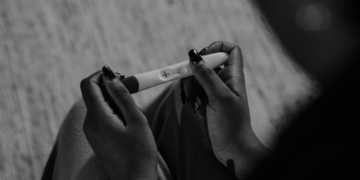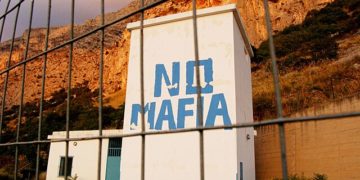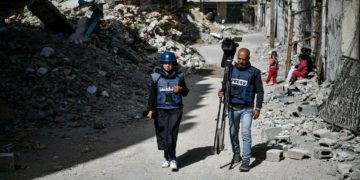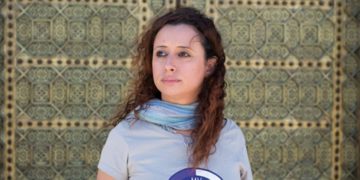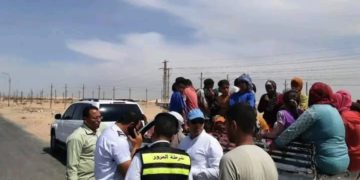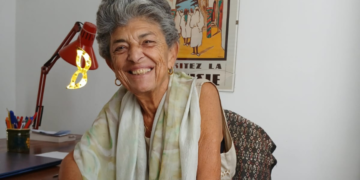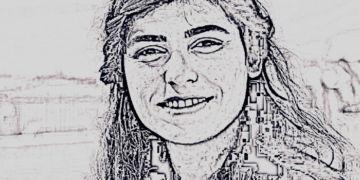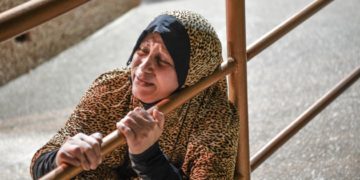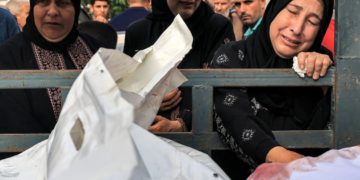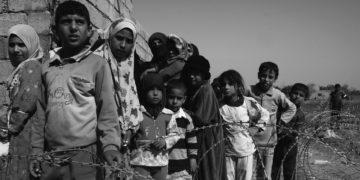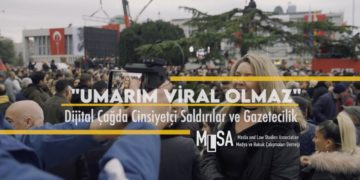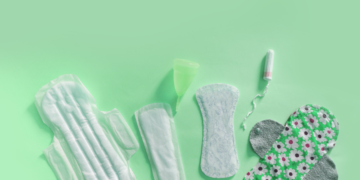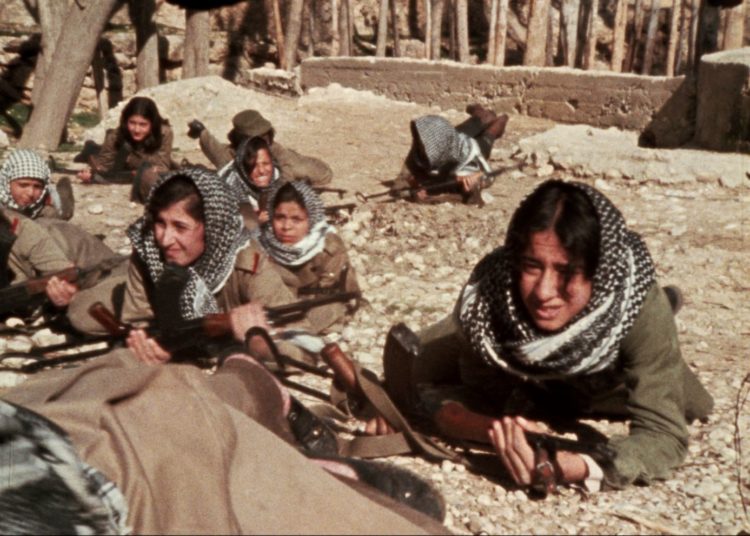This post is also available in: العربية (Arabic)
On the thirteenth of August 2012, a wish that Palestinian prisoners had barely dared to hope for—particularly in the early 1990s—astonishingly became reality: the Palestinian prisoner Ammar Abdel Rahman al-Zaben, who had been sentenced to life imprisonment, fathered the first child to be born from seminal fluids smuggled out of prison. This child was named Muhannad.
The name Muhannad is derived from the Muhannad sword, which symbolizes strength and solidity, especially in the face of the hardships of years of detention. It elicits the sheer insistence on creating new life, despite the tentacles of Israeli checkpoints and surveillance, and undeterred by the fact that prisoners are not allowed any physical contact with their wives.
When Palestinian women and men first heard the news of the smuggled sperm, they had a lot of questions. It seemed too miraculous to be true. But then they saw the face of the first baby born thanks to the “liberated” smuggled sperm, Muhannad, and stories started trickling down to people from the baby’s relatives, relating their feelings and more information on how the whole operation had taken place. This encouraged more prisoners to follow the example set by Ammar and seek such a method of conception which, clearly, the occupiers do not appreciate, despite the international covenants that guarantee spousal visits, as well as the right for prisoners to conceive. Prisoners who seek this option are also often going against the beliefs of Muslim parents who follow the rules set out by the Sharia.
Hassan Abed Rabbo, spokesman for the Commission of Detainees’ and Ex-Detainees’ Affairs, offers additional details about this and explains that “Now, a decade after the first successful birth of a child by a prisoner’s wife, and I’m talking specifically about the wives of prisoners with long or life sentences that exceed the human lifespan, and also specifically about these wives who conceived by way of smuggled, or “liberated,” seminal fluids, as the prisoners and their families like to call it – in this decade, this process has been repeated by 76 different prisoners from various governorates. This includes prisoners in the occupied interior, like prisoner Walid Daqqa. Fifty-six of them are from the West Bank, 13 from the Gaza Strip, and 6 from occupied Jerusalem. Some of them conceived only one child, but others had twins or even triplets.”
Unwed mothers

Among the mothers of children conceived by way of smuggled sperm, there are a few who gave birth having only signed the marriage contract and been married only in name, or even as engaged women. In other words, without having had any sort of physical relationship involving penetration. These women include Sana Salama, wife of the prisoner Milad Daqqa, Sherine Nazzal, wife of released prisoner Salah Hussein, Amna al-Husari, wife of prisoner Ahmad Jayyousi, and Amna Awni, wife of prisoner Anwar Elyan from Tulkarm, who has been detained since April 4, 2003, fulfilling a 23-year sentence.
“I fell in love with Anwar, and we recited the Fatiha at our engagement six months before he started to be pursued and was arrested. So we weren’t able to get married because of the circumstances. The biggest shock and disappointment was hearing the decision to keep him in prison for over twenty years. I decided I wouldn’t abandon him and would continue my journey with him instead, and wait for him until his release. His struggle is inside the prison; mine is outside,” Amna says to Medfeminiswiya.
Amna adds that she kept his name, and “five years after he was arrested, we wanted to make our relationship more official, so we got some lawyers to help us navigate the procedural hoops we had to jump through. We managed to sign the marriage contract. Back then, the thought of having children was completely out of reach, because I was conscious that by the time Anwar is released from prison, I’ll be in my forties, which means I’d be past the age of bearing children. It was just going to be the two of us. That was my reality, regardless of the fact that I had always wanted to be a mother. But then we heard the news of children being conceived through IVF with sperm smuggled from inside prison. That was when I really started picturing myself having children. I held on to that hope for years, until eventually I seriously ran it by the people around me. My family and Anwar’s both initially rejected the idea. They disapproved because I was only engaged; my situation was different from other wives who had actually had a physical relationship with their husbands before they’d been arrested. They were mostly afraid of what society would think, what people would say. But I kept insisting that I wanted to try, and with time and effort I managed to convince them. Thank God for that, and that it worked: here I am now with twins, Omar and Adel. They’re nine years old.”
Amna gets emotional describing the first time Anwar met their twin sons. They were two months old. Spontaneously, she divulges, “When he first saw them, he burst into tears. He couldn’t hold them or even touch them, the glass separated him from them. But at the same time, his joy was endless, and so was mine. This moment alone made me forget how long and tiring it had been to get to this point. It had been rough and carrying twins had made it harder. All I wanted was to be in the same room with him, with nothing in the way, even if it was just for a minute.”
Regarding the twins’ relationship with Anwar, Amna explains that she had done a good job of introducing the children to their father very early on. “When they first started to become conscious of things, I started introducing them to who their father was by showing them pictures of him. I even Photoshopped some photos of them so they could see pictures of themselves with their father, and I’d tell them stories that would warm them up to him… I always took them with me to see him, every time I went to visit him in prison. As time went on, the kids started to knock on the glass to at least be able to lay eyes on Anwar. On one of our visits, which I’ll never forget, they wouldn’t stop knocking on the glass, imploring me to “let us in to see Baba.” I begged the guard to let the children in to touch their father, and he said he would. Adel and Omar ran to the door, but we didn’t know we were about to be let down. The warden turned them away and claimed they didn’t have the special permit needed to enter. They started to wail. They completely broke our hearts – the sheer horror of that scene.”
A hug – at a price

But Amna didn’t give up. After that incident, she made special requests for the children to be allowed in to see Anwar, and she ultimately obtained the decision granting Adel and Omar permission to enter the prison every five months and be in a room with both their parents, and even to sit on their father’s lap. “Anwar felt like he was holding the whole world in his arms,” Amna reminisces. She tells us how in the first few years of their lives, the twins used to start trembling and crying when they saw the heavily armed occupation soldiers approaching them to take them from her arms and put them in the waiting room until their father was brought out to them. She would be watching this all from behind the glass, looking through it at her family with love and heartache.
We asked Amna whether she’d been allowed any physical contact with her husband throughout all these years. “Seven years ago,” she says, “I was allowed to hug Anwar, but only for two minutes. It was the day that prisoners were given the right to take photos with their families. That was the first time I’d ever been able to touch his body throughout his entire prison sentence, of which 21 years have now passed. I still feel, to this day, the beauty of that moment. It’s like some sort of dream that ended in the blink of an eye.”
Amna regards what she did and continues to do by raising their children as a single mother, without a father physically present, as a journey full of hope: their children gave them hope that survived despite the prison walls, and she is now looking forward to Anwar’s release. She constantly pictures him being welcomed back into their home and tries to see him through her children’s eyes. She encourages women whose husbands are in prison to draw inspiration from her experience and to try to conceive with smuggled seminal fluids if they want children.
The occupation punishes families conceiving with “liberated” seminal fluids
On August 13, 2012, the date of birth of Muhannad, the first child born from the “liberated” seminal fluids of his father Ammar al-Zaben, a vast celebration was organized in Bethlehem to mark the occasion. The Commission of Detainees’ and Ex-Detainees’ Affairs made a statement during the anniversary of this celebration noting that the persistence of this phenomenon confirms that “our men in prison yearn for freedom and life and express this by defying the Israeli jailers, knowing that the occupation actively imposes multiple penalties and restrictions to prevent the further smuggling of seminal fluids. This happened to Lydia al-Rimawi, the mother of Majd and wife of the prisoner Abdel Karim al-Rimawi, who conceived through “liberated” sperm. She was punished by being banned from visiting her husband for 15 months, and the Israeli court issued her a USD 1,500 fine. Her husband was put in isolation and subjected to continuous interrogation, and he was denied visitation rights. He was also banned from seeing his son for many months. They even punish the children who are conceived through “liberated” sperm, specifically those whose fathers are in prisons in Jerusalem. These children are denied a birth certificate and any rights usually granted to newborn babies. They are also denied access to any sort of document that testifies to their existence. They are not registered in the Israel Central Bureau of Statistics, nor are they enrolled in health insurance.”
According to Hassan Abed Rabbo, the spokesman for the Commission of Detainees’ and Ex-Detainees’ Affairs, there have now been 110 children born thanks to smuggled seminal fluids, across various governorates bust mostly in the West Bank. “These types of operations started happening more frequently after 2014. In 2017, 56 children were born, which increased to 67 children in 2018, 80 children in 2019, 88 children in 2020, and 104 children in early 2022. This number is now at 110 children born to 76 prisoners held in the prisons of the Israeli Occupation.”
How is the sperm smuggled out of prison?
Lawyer and researcher Abeer al-Khatib, who has published in-depth research about the processes of smuggling seminal fluids, explains that the process begins once the prisoner has obtained his wife’s consent, as well as that of his family and hers, or once the wife obtains the consent of her detained husband in cases where the wife is the first to express interest in having children. In these cases, consent is also needed from the families of both parties. In her statement to the Palestinian News and Information Agency WAFA, al-Khatib confirms that the second step comes after everyone involved has consented. The prisoner then starts preparing himself, familiarizing himself with the plan and also preparing the person who will be transporting the seminal fluids. Many attempts have failed, because the semen would be successfully smuggled out but have been stored in the wrong way, which meant that it was no longer viable by the time it reached the medical center. But prisoners kept trying, and they were finally able to devise a method that helped preserve seminal fluids for up to 20 hours.
There have now been 110 children born thanks to smuggled seminal fluids, across various governorates bust mostly in the West Bank.
These transportation methods included using a lighter, a bag of chips, or even a pitted date as a container. The prisoner usually informs someone else of his intention to smuggle seminal fluids, specifying how he plans to store the sample and have it transported outside the prison. When everything is in place, the person who was put in charge of carrying the sample receives the seminal fluids while two other prisoners stand witness at the bathroom door. Two additional prisoners are also present as witnesses, making for four witnesses in total. The prisoner would have already informed them which specific method he intends to use to hold the semen, as well as the date on which it will be smuggled out – the date of his next family visit without the glass barrier.
Once the person in question, usually a first-degree relative of the prisoner’s, receives the seminal fluid sample, the first thing he does upon leaving the prison is hand over the sample to the families of both the prisoner and his wife, who are ready and waiting for him. It is often the respective fathers of the prisoner and his wife who are waiting to collect the sample, and if one of them has already died or is unable to be there, the person standing in for him must be a first-degree relative.
Al-Khatib adds that “After the semen is collected, it is taken to the medical center to ensure its viability. It is then processed, frozen, and preserved, while the prisoner’s wife is being prepared for the in-vitro fertilization procedure. The seminal sample is also documented as belonging to the specific prisoner in question.
To conclude, it must be noted that the Grand Mufti of Jerusalem and custodian of Al-Aqsa Mosque, Sheikh Muhammad Hussein, has previously confirmed that the Fatwa Council has issued a fatwa authorizing this method of conception with a list of regulatory steps to ensure that the samples are transferred from the prisoner himself to his wife, and also to control the transportation and insemination processes, which must occur in the presence of religious figures.
To this day, 110 boys and girls have been born thanks to these “liberated” sperm samples, consistently reaffirming through their very existence that it is always possible to confront oppression and the occupiers, and that these acts of standing up to oppression multiply and proliferate in ways that the oppressor would not be able to imagine or predict. Like seminal fluids smuggled in lighters becoming Palestinian children carrying the cause of freedom and dignity in their veins.
